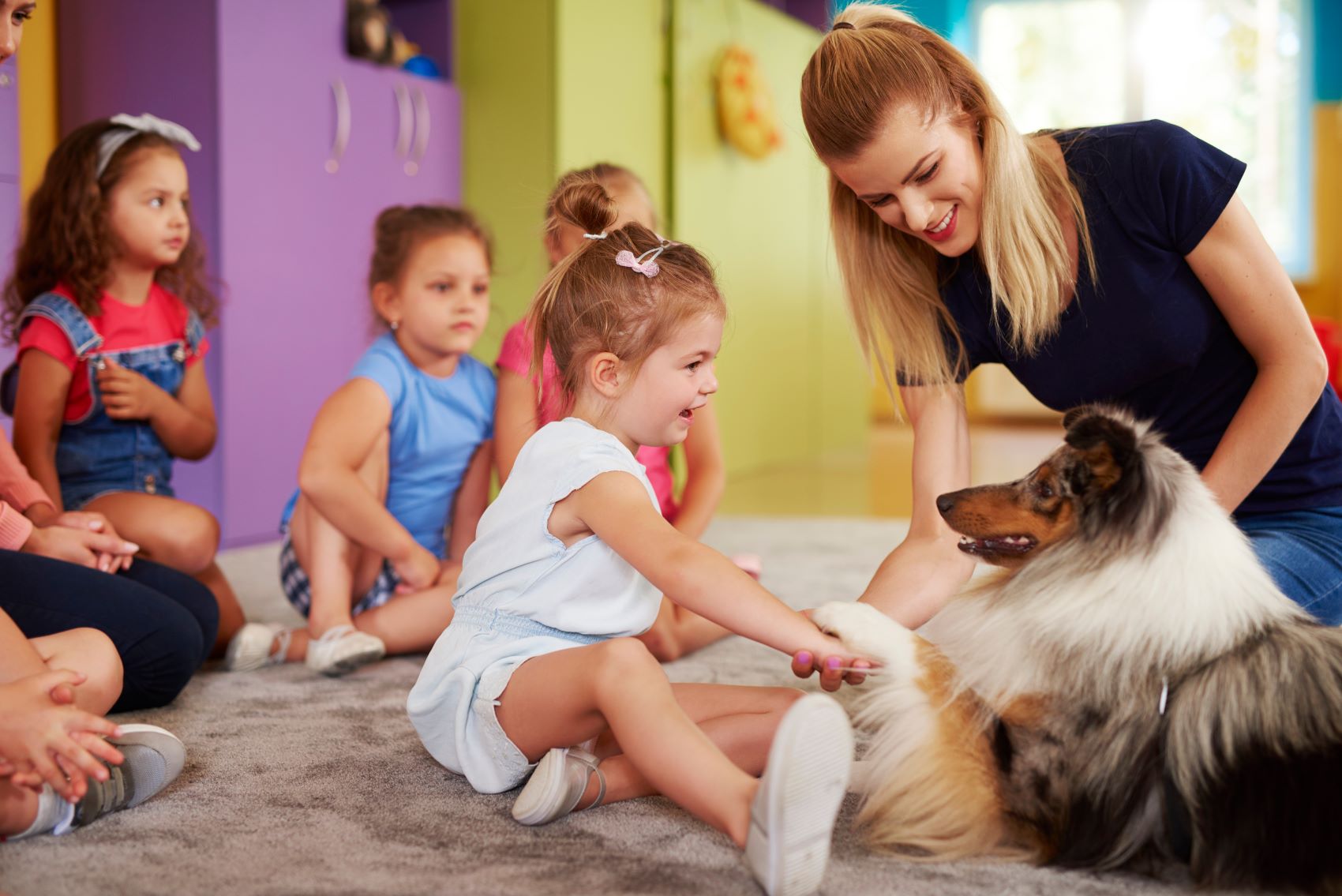
Using Animal-Assisted Therapy in Classrooms
- Posted by Pediatric Therapeutic Services
- Categories Blog
- Date April 5, 2024
Animals are a source of comfort for many students. As school-based therapeutic techniques continue to evolve, some therapists who work alongside Pediatric Therapeutic Services (PTS) have begun introducing animal-assisted therapy into classrooms.
Animal-assisted therapy can have an emotional and developmental effect on children in a classroom, whether you’re working with an entire room of students, small groups, or even one-on-one.
Animal-Assisted Therapy for Emotional Regulation
The most common animal used for animal-assisted therapy in classrooms is therapy dogs. These dogs are trained to work in therapeutic environments and often bring a calm temperament. Therapy dogs and their accompanying therapist are trained to provide support in classroom environments with specific therapeutic goals. Teachers and administrators can work with the therapist to determine those goals.
Emotional regulation is key to creating an engaging learning environment for students who excel and struggle in school. Using therapy animals in classrooms has been found to reduce students’ stress levels, raise positive emotions, and help students actively engage in learning activities and with each other.1
There are two ways in which therapy animals can help students emotionally regulate:
- The animal may provide a calming and reassuring presence as students complete unrelated activities.
- The animal may participate in activities with students and facilitate easier social interaction between students.
Certain educational tasks that normally bring out stress or anxiety in students may feel more manageable with the presence and support of a therapy animal. This allows classrooms to support the whole child, which better sets them up for success.
Animal-Assisted Therapy for Developing Physical and Communication Skills
Animal-assisted therapy can also be used to help students develop physical and communication skills. Therapy animals can be trained to aid students in learning more about performing specific tasks within a school environment.
This type of animal-assisted therapy is easily integrated into our Multi-Tiered Systems of Support (MTSS) model, which offers support at classroom-wide, small-group, and individual levels. If a whole class needs to learn a specific task, or only certain students to, animal-assisted therapy can adapt to help in that group.
For example, students who are nervous about performing specific classroom tasks, such as reading out loud, can begin by reading to an animal who won’t judge them for struggling. The therapist with the therapy animal can use this opportunity to:
- Ask follow-up questions
- Provide additional educational support
- Give the student more one-on-one attention
When interacting with a therapy animal, students may learn appropriate ways to interact with certain animals, as well as practice interpreting behavior from the animal, which can be a skill transferred to human interactions. These skills can help students enhance their problem-solving abilities in groups because they learn to understand one another better.
Students who need help with motor skills may also find it helpful to interact with a therapy animal. Learning to pet an animal properly, handle treats, and engage in play with the animal may help students with other classroom activities, including cleaning up or crafting with their peers.
Explore Using Animal-Assisted Therapy in Classrooms Alongside PTS
If your teachers or administrators are interested in partnering with Pediatric Therapeutic Services to introduce animal-assisted therapy into classrooms, contact us today. The therapists who work alongside PTS can help your school prepare for animal-assisted therapy sessions that can help your students grow.
1 Source
You may also like

World Down Syndrome Day

World Behavior Analysis Day

